The most popular tech gadget from the year you were born
Matthew Wilson,Zoë Ettinger,Mykenna Maniece

- Technology has undoubtedly changed how we live our lives.
- Since 1950, there's been a new technological invention or innovation every year.
It's crazy to think about how in less than 100 years, we've gone from inventing the microwave oven to experimenting with artificial intelligence and virtual realities.
So many of the items we now take for granted were once incredible inventions and innovations, but that's the nature of technology: It constantly changes, improves, and problem solves to the point where younger generations can't even imagine a world without it.
Just look at the cell phone. The first mobile phone was released in 1973, the first smartphone arrived in the '90s, and then the iPhone dropped in 2007 and completely revolutionized the technology.
Now, 90% of Americans own smartphones compared to just 35% in 2011, according to a study released by the Pew Research Center in 2024; and, unsurprisingly, 18- to 29-year-olds are more dependent on them than any other age group.
So, while we all await the next big tech gadget to impress Gen Alpha, take a look at what world-changing product was invented or launched the year you were born (or at least until 2010) and marvel at just how much the world's changed since then.
1950: Zenith Electronics introduced the first remote controls, which were connected to television sets by wires.
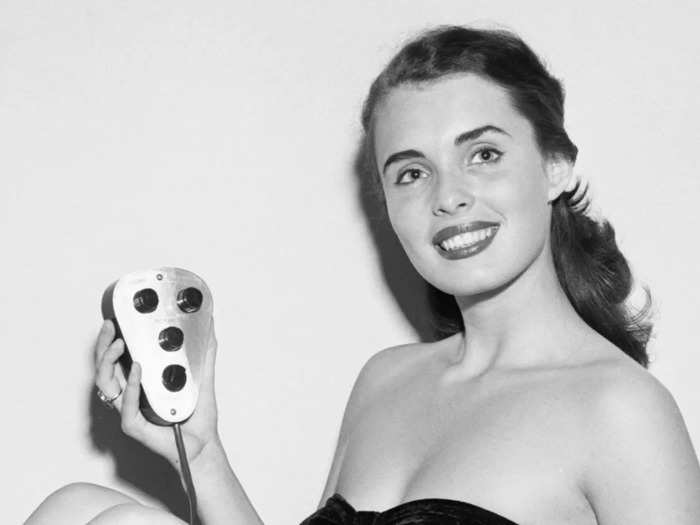
Zenith's remote control was called the "Lazy Bones," according to the company's website. It had just one button for flipping channels. The remote pictured above is a slightly more advanced version, with four buttons.
Zenith later introduced a wireless remote called the "Flash-Matic" in 1955.
1951: Charles Ginsburg, a researcher at Ampex Corporation, invented the videotape recorder.
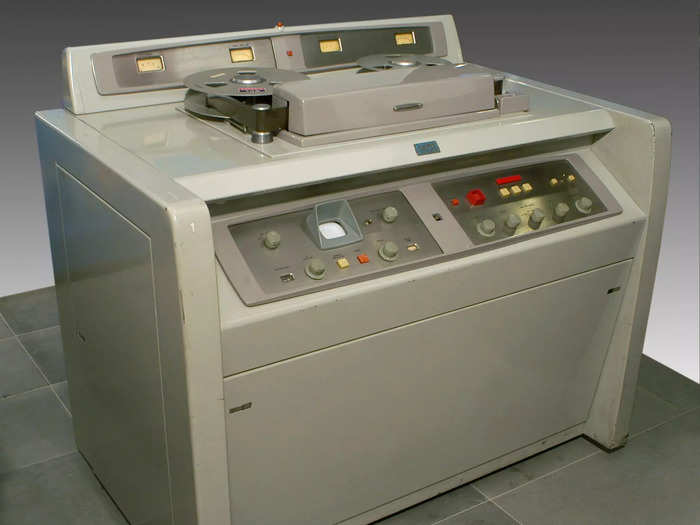
Smithsonian Magazine reported that the first videotape recorder worked by taking photos and converting them into electrical impulses, which were then stored on magnetic tape. It went for a cool $56,000.
1952: The movie-watching experience Cinerama premiered in New York City.
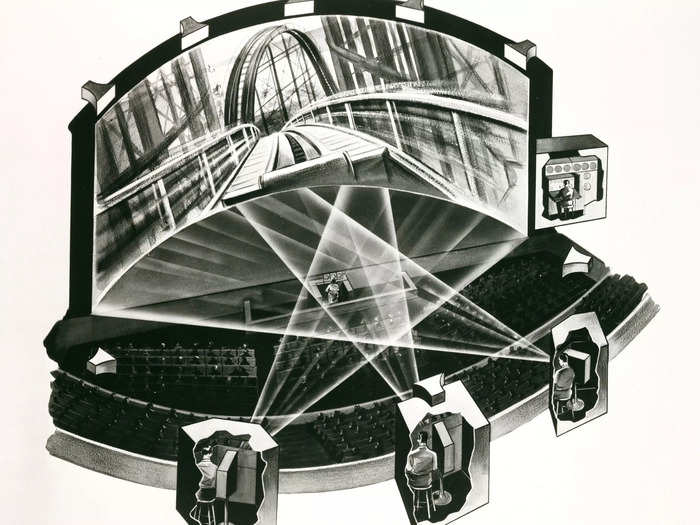
With the invention of television, Hollywood was interested in creating a movie-watching experience that couldn't be fully appreciated or captured at home. Thus, the Cinerama process was born.
Cinerama used three cameras to film during production, then the footage would be projected onto one large curved screen, like the one in the picture above.
The recently closed Cinerama Dome in Hollywood was a relic of this film era, as the industry had intended to produce a series of similar theaters across the country. Unfortunately, by the time the Cinerama Dome opened in 1963, the Cinerama process was no longer in use, Variety reported in 2021, because it was too difficult and expensive. Only seven films were ever shot using the Cinerama process, per a blog post in the UCLA Library's Film & Televison Archive from 2016.
1953: Richard C. Laramy received a patent for his portable cooler.

Sports fans, beach goers, and picnic attendees alike can thank Richard C. Laramy for the invention of the portable cooler. He received a US patent in 1953 and the item quickly became a staple in households around the country, reported the Science History Institute.
1954: The first transistor radio, the Regency TR-1, was made by Texas Instruments.
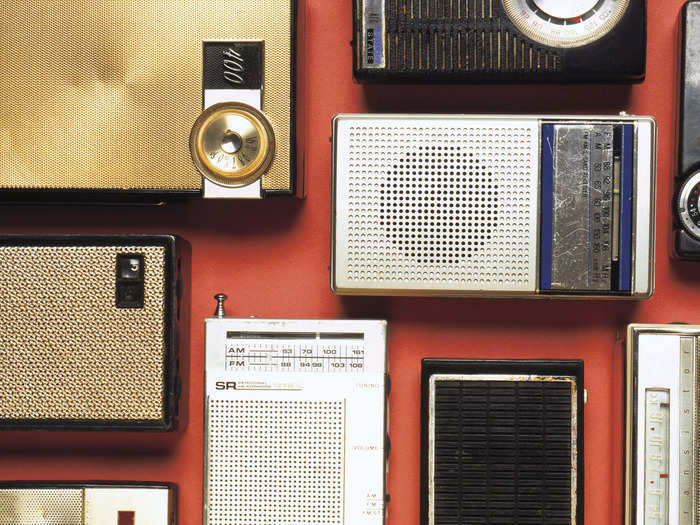
The first transistor radio — "a fantastic pocket-size 'music player,'" as Sound & Vision reported — made it possible to tune into your favorite AM radio station wherever you were, revolutionizing the way people listened to music.
It cost $50, equivalent to around $480 today.
1955: Tappan released the first microwave oven designed for consumers. It made cooking faster and easier than ever.
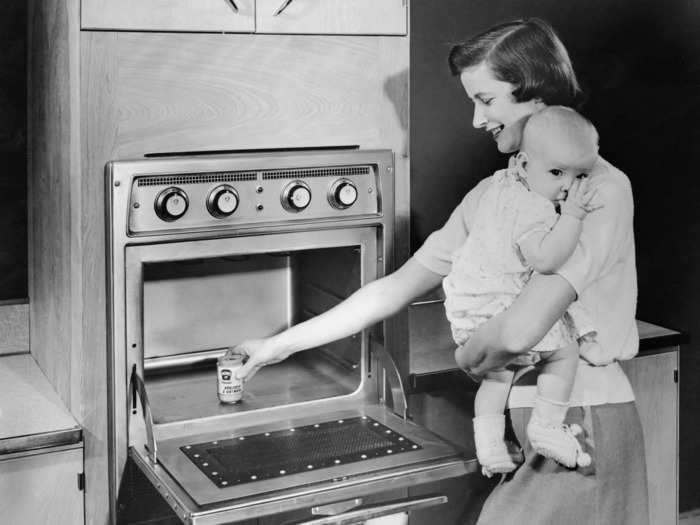
In 2010, Wired reported that the microwave oven was born out of the radar systems used in World War II-era technology. The first iterations weighed about 750 pounds and were nearly 6 feet tall. Now, they can fit comfortably on a countertop in the smallest of kitchens.
1956: IBM released the first computer hard drive to be sold commercially.
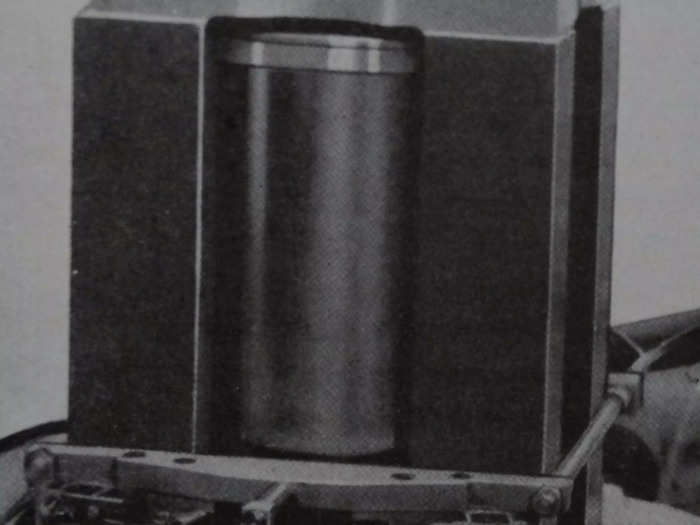
Hard drives store digital data like documents, computer programs, and applications. This drive held five megabytes of data at $10,000 a megabyte, and was the size of two fridges, PC World reported. Now, hard drives can be smaller than the size of a tablet.
1957: The first battery-operated, wearable pacemaker was sold to consumers.
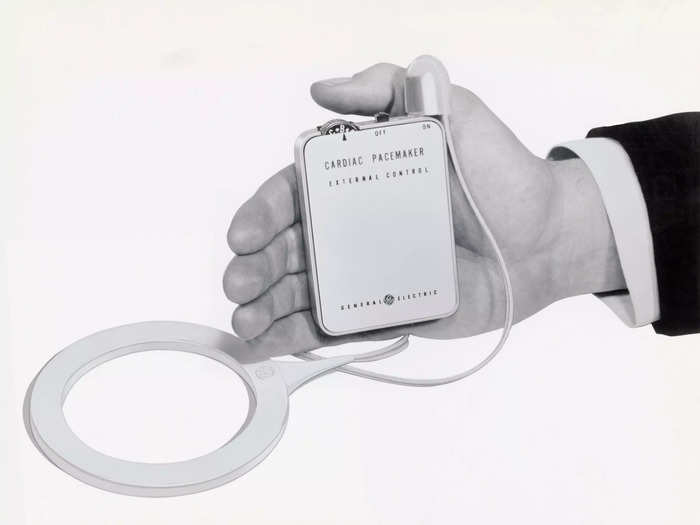
Earl E. Bakken was an electrical engineer, TV repairman, and co-founder of Medtronic Inc. He produced the first battery-operated wearable pacemaker in 1957, saving countless lives, reported Images in Paediatric Cardiology journal. It used an electric current to help regulate heart problems.
1958: The first modem, a machine that can translate data, was released, revolutionizing communication and paving the way for the internet.
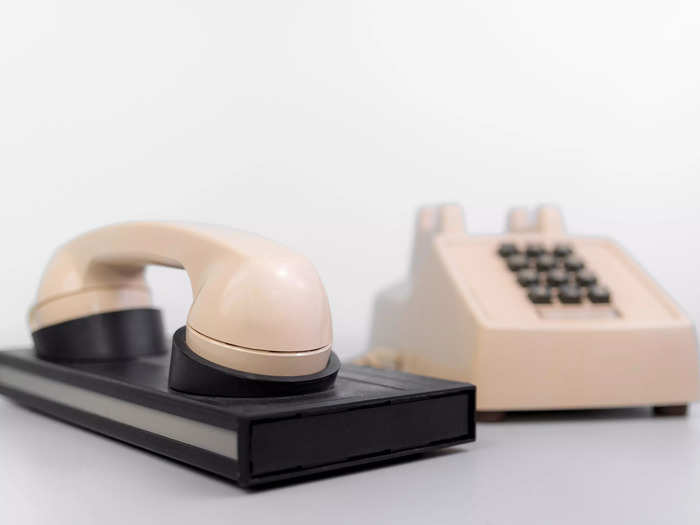
The Bell 101 modem, released by AT&T in 1958, was the first commercial modem for computers, reported Tech Radar. Modems are still in use today to connect computers and other devices to the internet.
1959: Internal pacemakers became available.
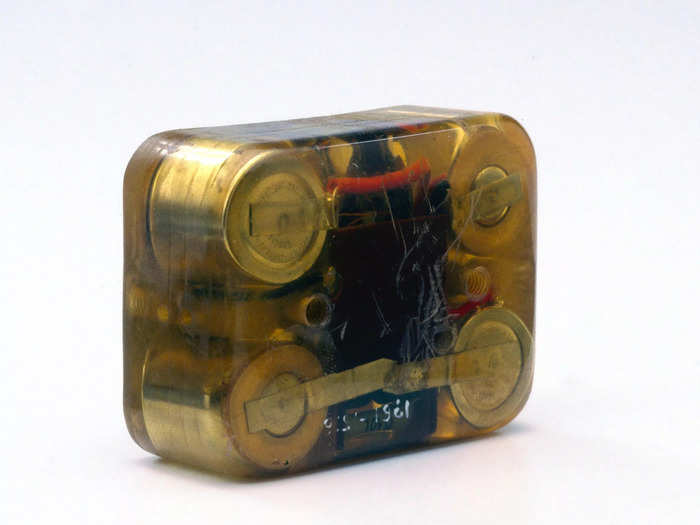
Images in Paediatric Cardiology journal reported that in 1959, Wilson Greatbatch, an electrical engineer, patented the internal pacemaker, which can treat more serious heart conditions than external pacemakers can.
Dr. William Chardack reported the first successful use of the pacemaker inside a human in 1960, which changed the future of heart medicine forever.
1960: The portable television reached the market.
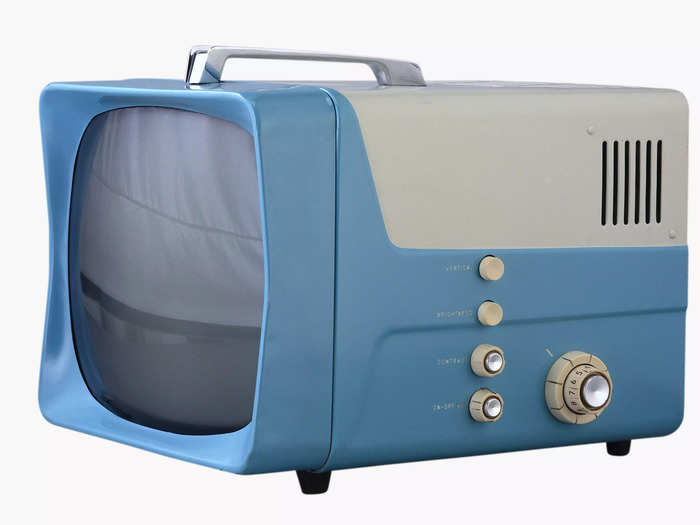
Just a few decades after the TV was invented, Sony released the TV-8-301 — the first complete transistor television — in 1960, reported The History of Television. It weighed about 13 pounds and could run on two 6-volt batteries. However, it only lasted for two years before getting discontinued.
1961: IBM's Selectric Typewriter was popular.
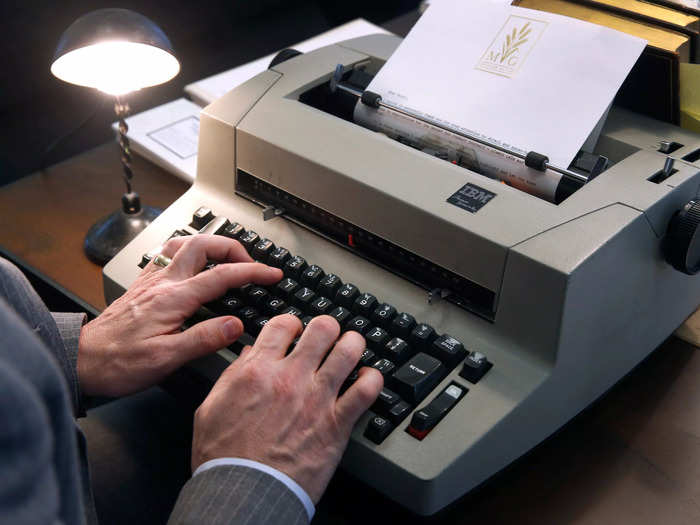
The Selectric overcame the problems faced by typewriters in the past by replacing "individual type bars with 88 characters positioned around the spherical type element," per IBM's website.
This prevented jamming and the need for a carriage, so users' productivity improved. By 1978, IBM was responsible for 94% of the electric typewriters on the market.
1962: Audio cassette tapes were developed.
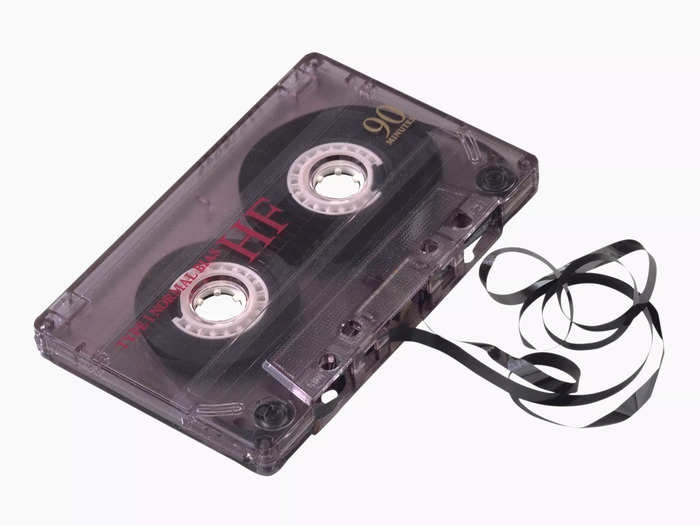
The audio cassette tape was first created by Philips Company engineer Lou Ottens in 1962, reported the New York Public Library. Their small size made them a convenient way to listen to pre-recorded music, but they were later rendered nearly obsolete by CDs and streaming.
1963: Douglas Engelbart, an engineer and inventor, created the first computer mouse. It was made of wood and had just one button.

The New York Times reported that some early versions of the mouse had three buttons, though Engelbart thought as many as 10 buttons would be more useful. Computer mice today still usually only have two or three buttons.
1964: Bell Telephone's Picturephone went on display at the 1964 World's Fair. Much like video calls today, it let callers see the person on the other line.
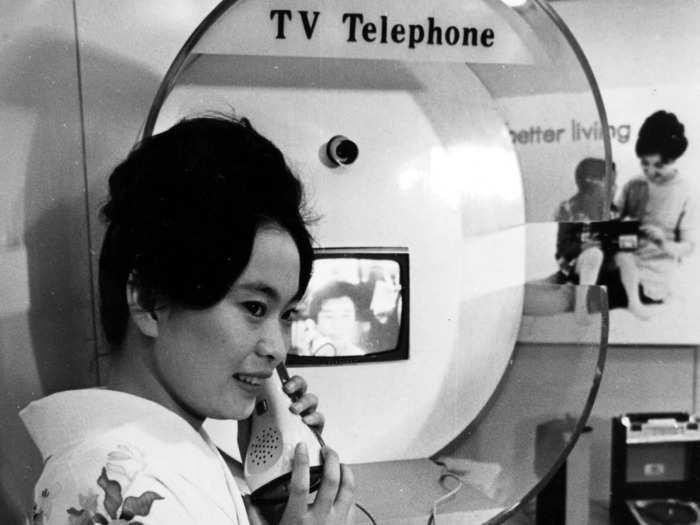
"From a booth set up in Grand Central Terminal, a person could talk to a friend in Chicago or Washington while also seeing them on a small video screen," The New York Times reported in 2014. It cost the small price of $16 for a 3 minute call — roughly $121 today.
It was the beginning of what we now know as video-chatting.
1965: Duane D. Pearsall and Stanley B. Peterson invented battery-powered smoke alarms that could easily be installed and replaced in homes.

A 2021 report by the National Fire Protection Association found that "the risk of dying in reported home structure fires is 55% lower in homes with working smoke alarms than in homes with no alarms or none that worked."
The association reported that 57% of home fire deaths from 2014 to 2018 were caused by a lack of smoke alarms altogether and a lack of working smoking alarms.
1966: The industry standard microphone for performers today, the Shure SM58, was released.
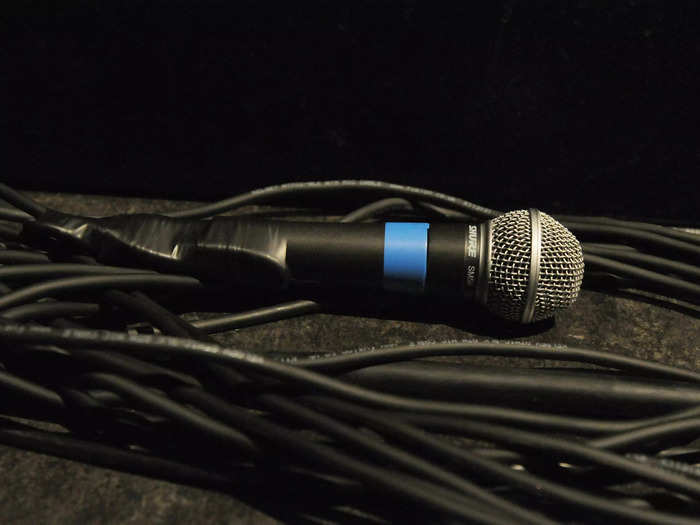
Per the company's website, the first SM58 microphones were sold in 1966. The microphone is the preferred choice of famous musicians like Paul McCartney, Patti Smith, and Alice Cooper.
1967: Texas Instruments released the handheld calculator, the first model that could fit in a pocket.

PBS reported that Texas Instruments group, led by Jack Kilby, developed a calculator that was only 6 inches tall. It was far smaller than a previously released model, which weighed 55 pounds and cost $2,500.
1968: Random-access memory (RAM) was invented. It is considered one of the most significant advances in computer technology.

RAM is a hardware storage device for computers. It was first invented by Robert Dennard, an electrical engineer and inventor, in 1968, Computer Hope reported. Computers still use RAM to this day.
1969: The microcassette was developed by the Olympus Corporation.
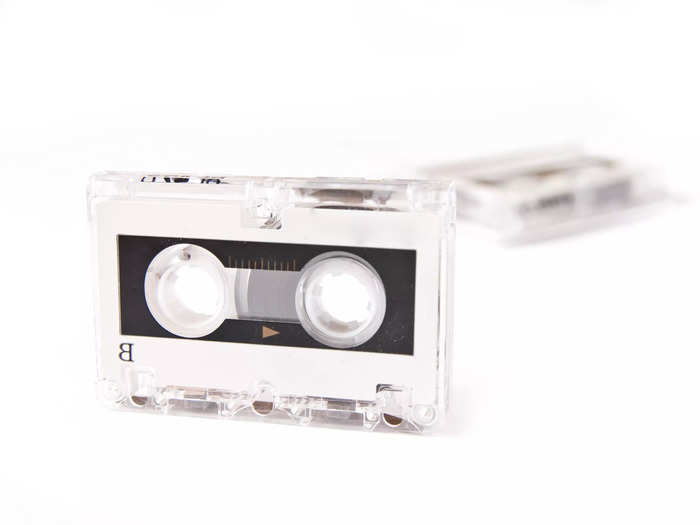
Microcassettes had the same width as the tape on the Philips Compact Cassette but used a much smaller plastic frame, making them even more convenient to carry around on your person and inside your car.
1971: The inventor of the floppy disk is contested, but the device became available.
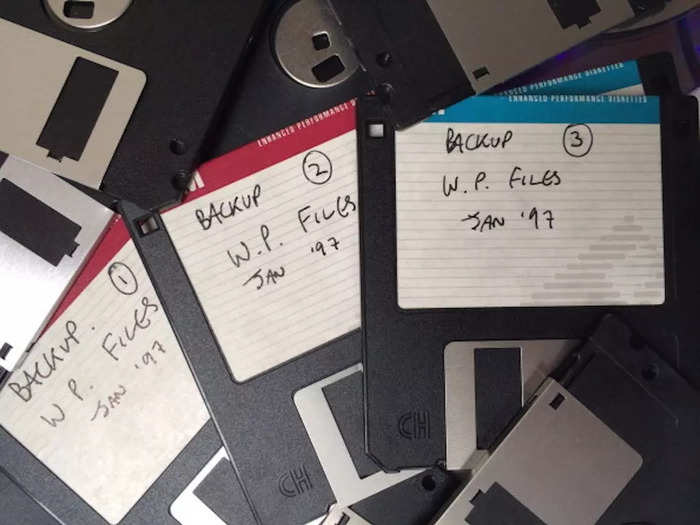
Smithsonian Magazine reported that Japanese inventor Yoshiro Nakamatsu, also known as Dr. NakaMats, received a Japanese patent for the floppy disk in 1952, but American company IBM insists its team of engineers were responsible for the invention in 1969. The first iterations were released in 1971.
Floppy disks store data and were coined "floppy disks" for their relatively malleable outer casing. Some Gen Zers may remember floppy disks as the "save" icon on computers.
1972: Video game developer Allan Alcorn created Pong, which was released by Atari.
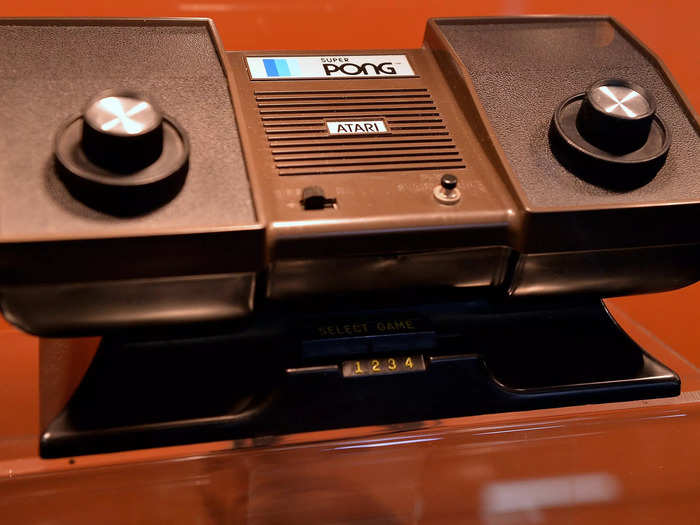
Pong is widely regarded as the game that sparked the video game industry. VentureBeat reported that Alcorn reacted to the explosion of the video game industry by saying, "It wasn't my intention. I'm just as surprised as the next guy."
1973: Motorola released the first mobile phone. As seen in this photo, they were far clunkier than today's models.
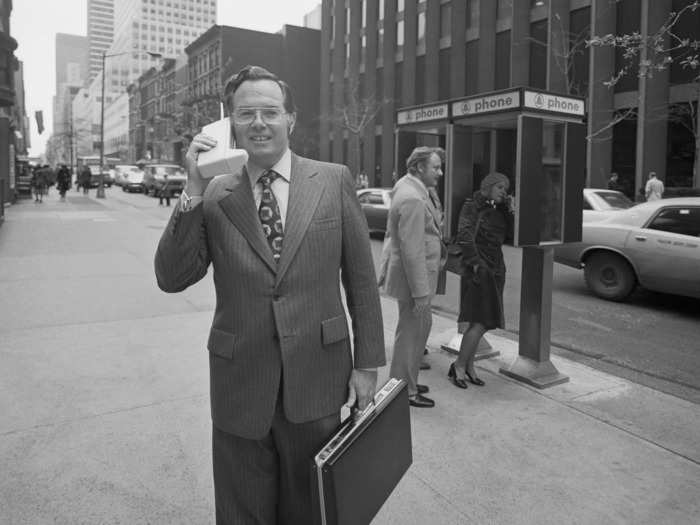
Motorola engineer Martin "Marty" Cooper made the first call on a mobile phone to Joel S. Engel, his rival at Bell Labs, on April 3, 1973, reported EDN.
1974: Inside an Ohio store, a barcode scanner was used for the very first time.
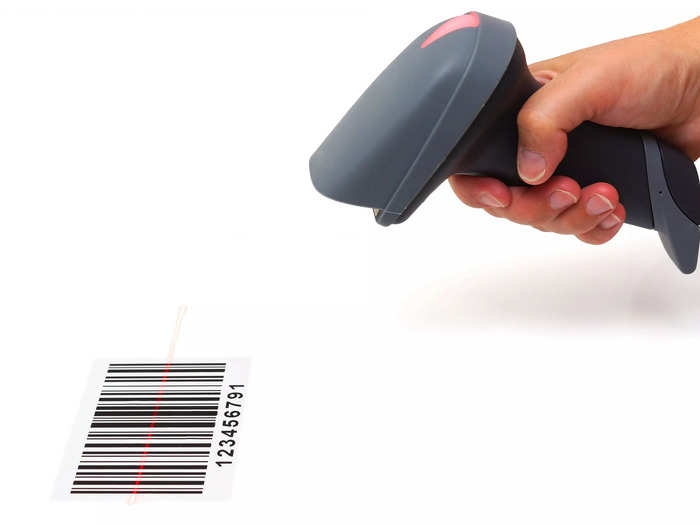
Smithsonian Magazine reported that on June 26, 1974, in the small town of Troy, Ohio, the first item marked with the Universal Product Code (UPC) was scanned at the checkout counter of Marsh Supermarket.
Barcode scanners greatly reduced checkout line times.
1975: Steven Sasson, an engineer at Eastman Kodak, invented digital photography and made the first digital camera.
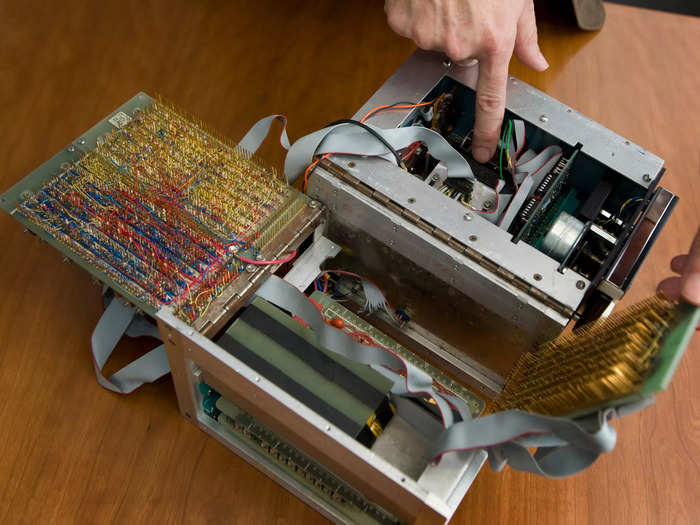
Though the prototype was invented in 1975, Business Insider reported that the first digital camera made widely available in the United States was the Dycam Model 1, but the model failed because of its high price tag, lack of color, and poor resolution.
1976: VHS, or Video Home System, was developed by JVC, making movies widely available for home viewing.
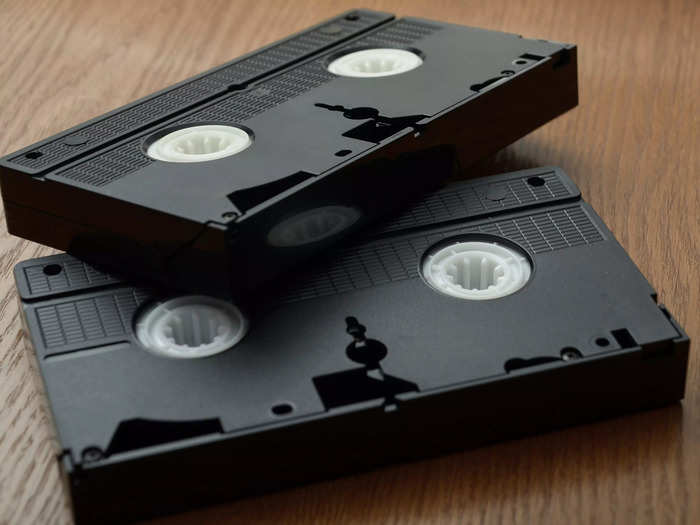
Wired reported that the following year, in 1977, VHS was introduced in North America at a press conference before the Consumer Electronics Show in Chicago. VHS tapes were the only way to watch movies at home for decades, before DVD and Blu-ray took over.
1977: Steve Wozniak and Steve Jobs invented the Apple II, one of the earliest home computers.
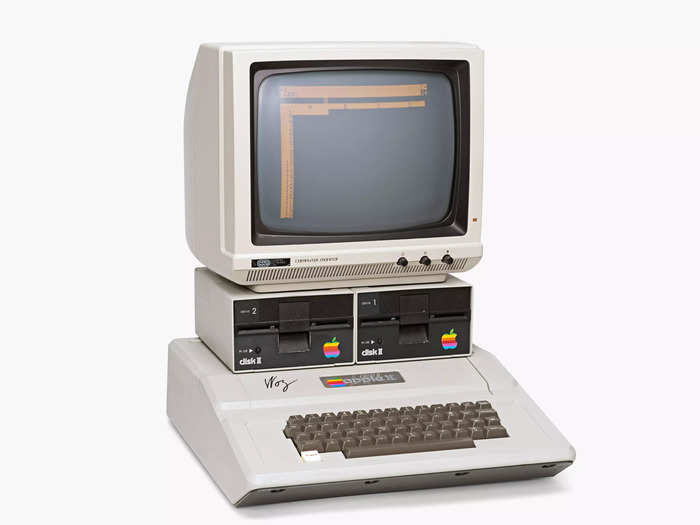
The National Museum of American History reported that Wozniak and Jobs invented the first Apple computer, the Apple I, in 1976, but their vastly improved version, the Apple II, was released to consumers in 1977. Needless to say, Apple has become one of the largest companies in the world, and it can be traced back to the Apple II.
1978: LaserDisc launched as a home movie rival to the VHS tape and later the DVD.
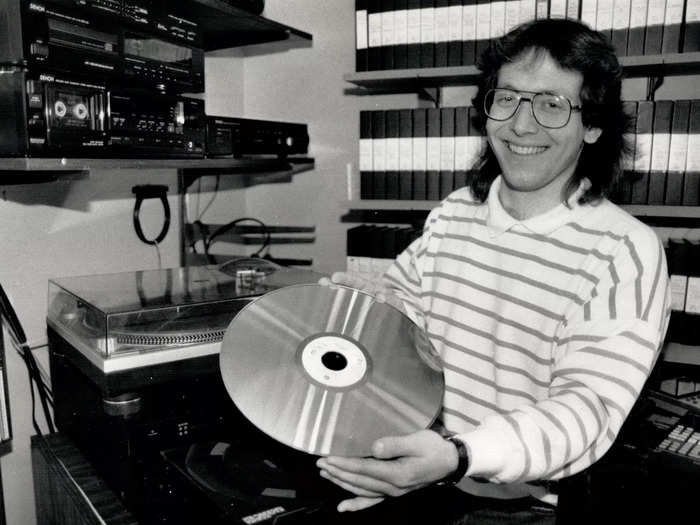
CNET reported that the first LaserDiscs had analog audio tracks, but later versions featured stereo audio. The audio and video quality was considered by many to be superior for its time — however, even at the height of its popularity, it was still considered a niche product.
1979: The Walkman cassette player, which was invented by designer Norio Ohga, launched. It was the first way to listen to music on the go privately.
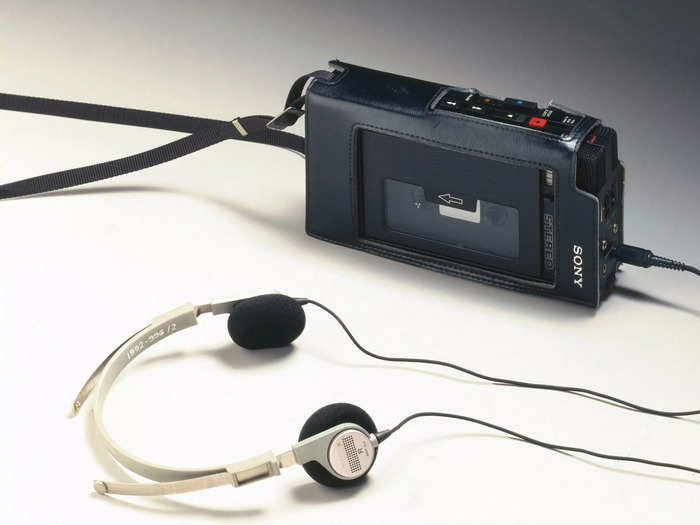
A prototype of the Walkman was invented by Ohga when Sony co-founder Masaru Ibuka asked for a more private way to listen to opera music, The Verge reported. Selling for $150, the Walkman proved popular, with 400 million devices sold during the brand's lifetime.
1980: Nintendo engineer Gunpei Yokoi developed the Game & Watch handheld game systems.
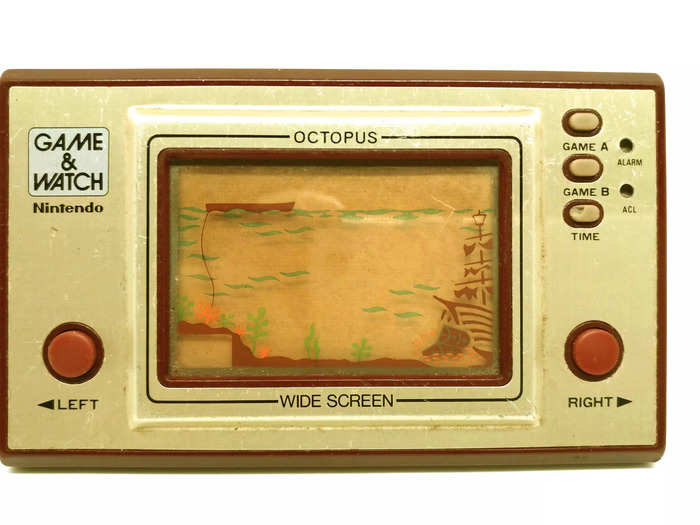
Nintendo Life reported that Yokoi came up with the idea after seeing a Japanese businessman fiddling with a pocket calculator. Using LCD technology, the line of handheld games launched with a focus on short bursts of gameplay. Now, video games were portable.
1981: Developed by the IBM Corporation, the IBM Personal Computer was one of the first personal computers on the market.
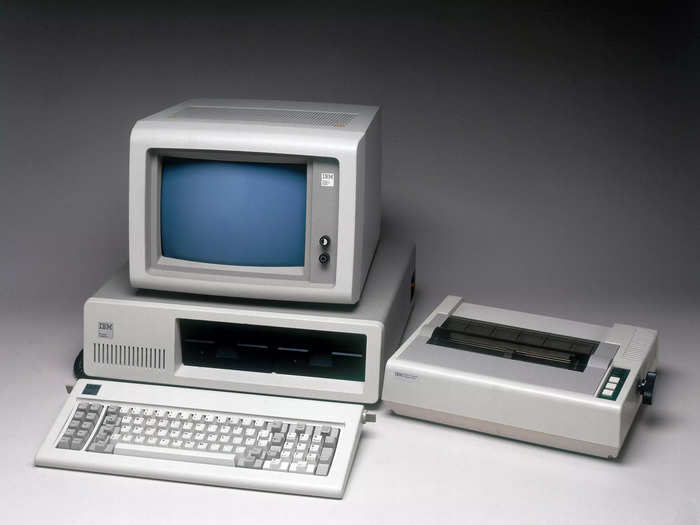
Targeting consumers, the IBM Personal Computer was significantly faster than its competition and boasted 10 times the memory, Britannica reported.
1982: The first compact disc (CD) player hit the market and changed the way people listened to music.
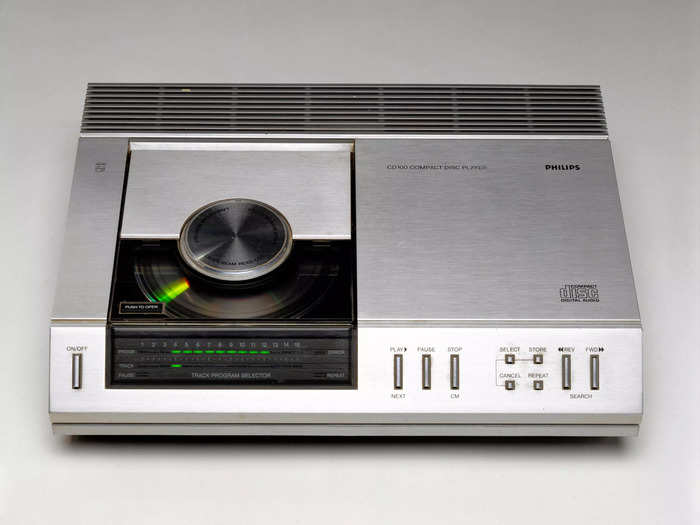
The CD was developed as a collaboration between Philips and Sony, and the first CD player, the Sony CDP-101, was launched on October 1, 1982, Science Museum Group reported. The CD would effectively kill cassettes and vinyl as the go-to medium for music.
1983: Betamovie became one of the first camcorders available to consumers.
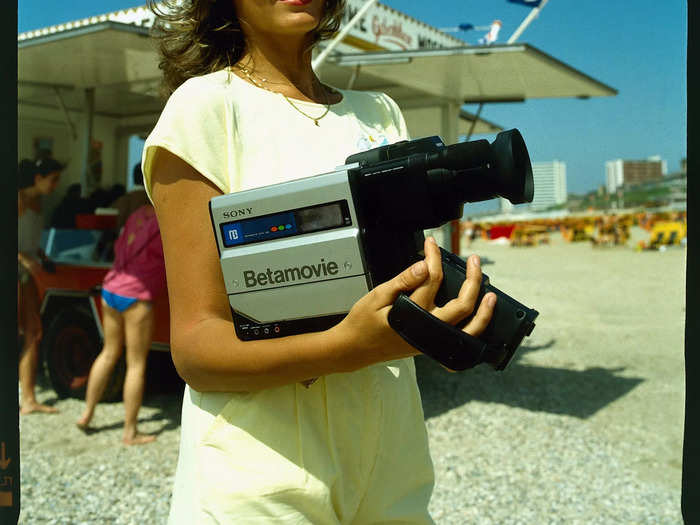
Developed by Sony in 1983, the Betamovie camcorder was the first to combine the camera and recorder into one item, ACMI, Australia's national museum of screen culture, reported. Before the Betamovie, a portable VCR had to be connected to the camera by a cable.
1984: Developed by Apple, the Macintosh launched as competition to the IBM Personal Computer.
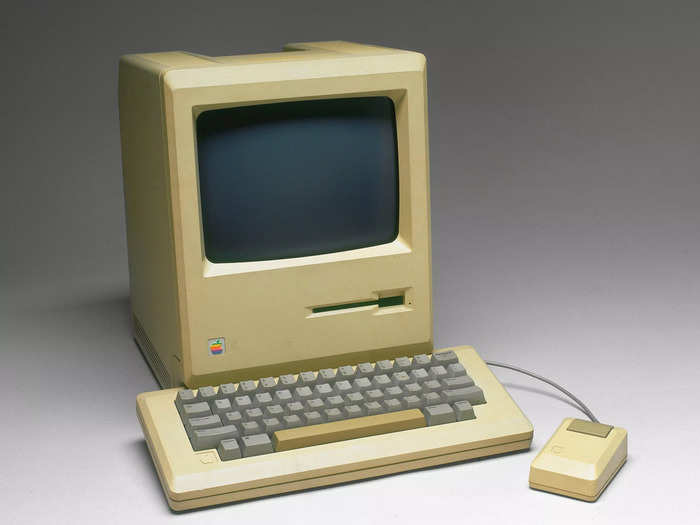
The Guardian reported in 2009 that the Macintosh was one of the first computers to have a graphics interface, which would quickly become the standard.
1985: Nintendo entered the home-gaming system market with the Nintendo Entertainment System, or NES.
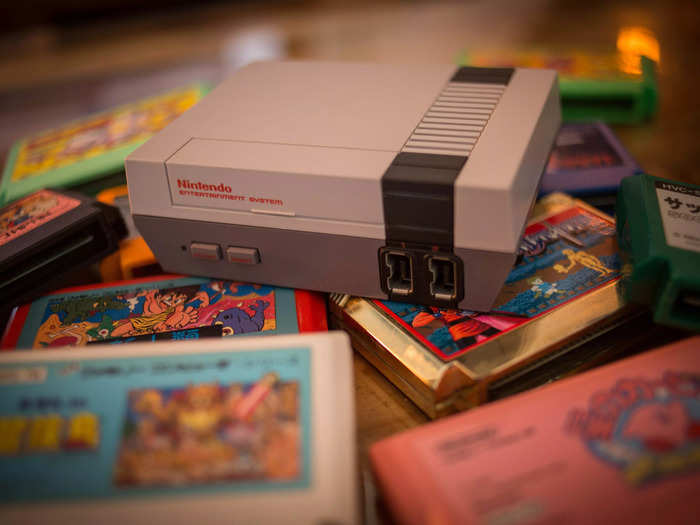
The NES sold 60 million units during its lifetime, Screen Rant reported, and introduced iconic characters like the Mario Brothers and Link to the masses.
1986: The Japanese public was introduced to the first disposable film camera on the market.
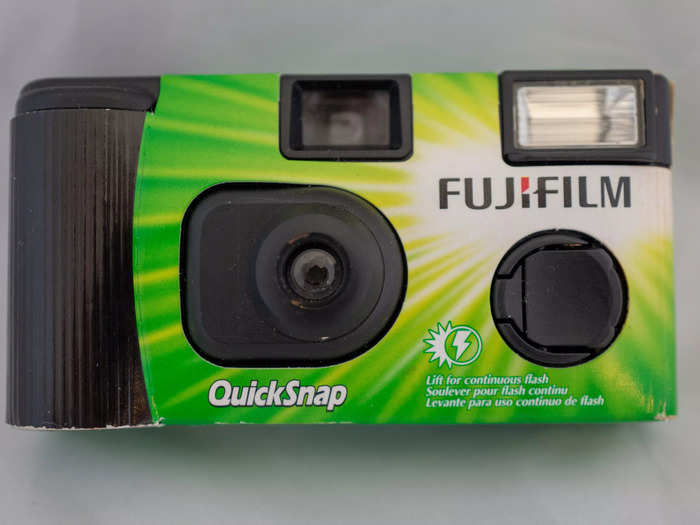
The QuickSnap camera was released by Fujifilm in 1986, with the idea that "everybody should enjoy photography with ease," per company history.
Disposable cameras offered a cheaper alternative to consumers than traditional photography, though they are less immediate than a Polaroid.
1987: The Sony Discman was a step up from the Walkman.
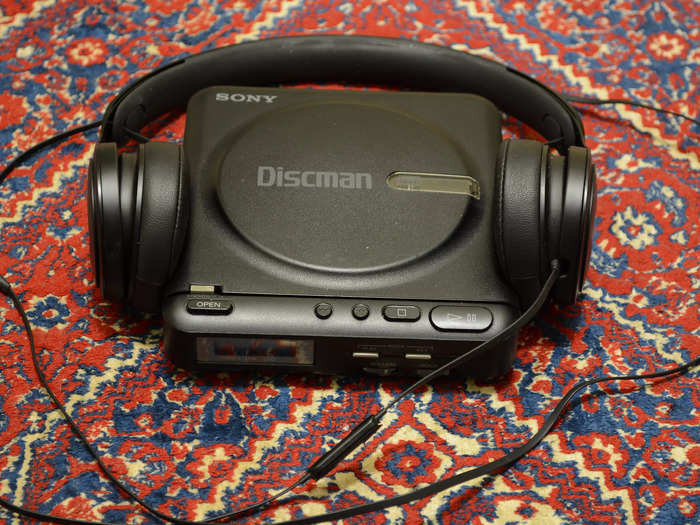
The successor to the Walkman, Sony's Discman represented innovation in its purest form, adapting from the cassettes of the past to CDs. In 1987, The New York Times called the Sony D-10 Discman "an engineering tour de force," noting that it was smaller, sleeker, and lighter than earlier iterations of the technology.
1988: The Mega Drive gaming console was released in Japan. The following year, North American audiences were introduced to it as the Sega Genesis.

The Guardian reported that the Sega Genesis was a competitor to Nintendo's system, the NES. Sega even had its own mascot — the blue hedgehog Sonic — to rival the popularity of Mario.
1989: Nintendo developed and released one of the best-selling video game systems of all time: the Game Boy.
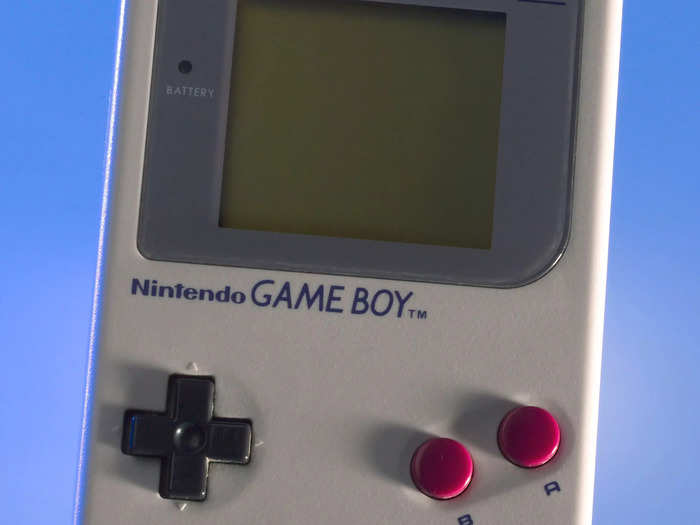
Smithsonian Magazine reported that the original Game Boy sold one million systems in the US in just a matter of weeks after its release. Nearly 120 million Game Boys would be sold worldwide during the device's lifetime, kickstarting iconic franchises like Tetris and Pokémon.
1990: Developed by brothers Thomas and John Knoll in 1987, the first commercial version of Photoshop launched in 1990.
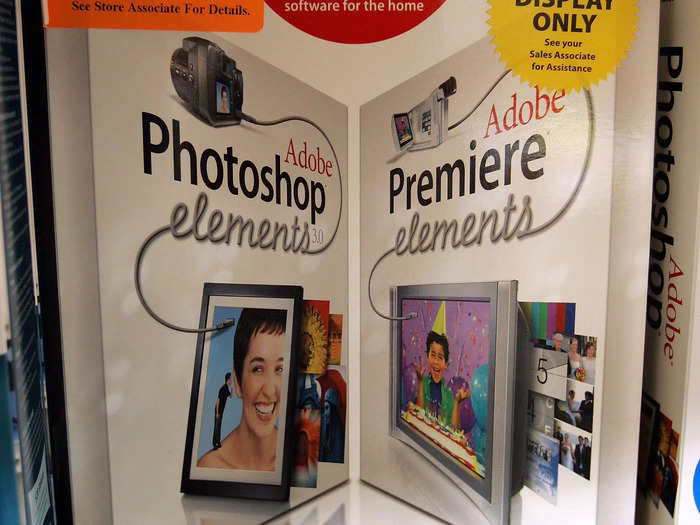
The photo-editing software was released exclusively for the Macintosh in 1990, The Verge reported. It changed the world of photography forever when it was introduced — now, photos could be edited digitally.
1991: Researchers at the University of Cambridge accidentally developed the webcam.
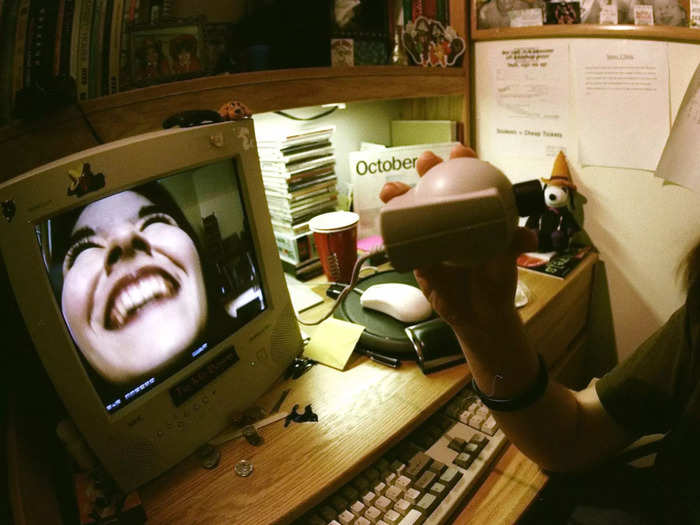
The BBC reported that the first webcam was created by Dr. Quentin Stafford-Fraser, Dr. Paul Jardetzky, and Dr. Martyn Johnson at the University of Cambridge. Stafford-Fraser and Jardetzky set up a camera for researchers to watch the lab coffee pot, which was located in a different room, to see if it was empty before getting up to grab coffee.
Johnson, who was not connected to the campus' internal computer network, wrote a code that allowed him to view the feed through the World Wide Web for the very first time, thus the first webcam was born.
1992: Though development started in 1987, the Sonicare electric toothbrush wasn't released until five year later.

David Giuliani co-invented the Sonicare electric toothbrush with University of Washington professors Dr. David Engel and Dr. Roy Martin because he wanted to improve upon the way people brushed their teeth, the Seattle Times reported.
1993: The Apple Newton MessagePad, a PDA (Personal Digital Assistant), went on sale.
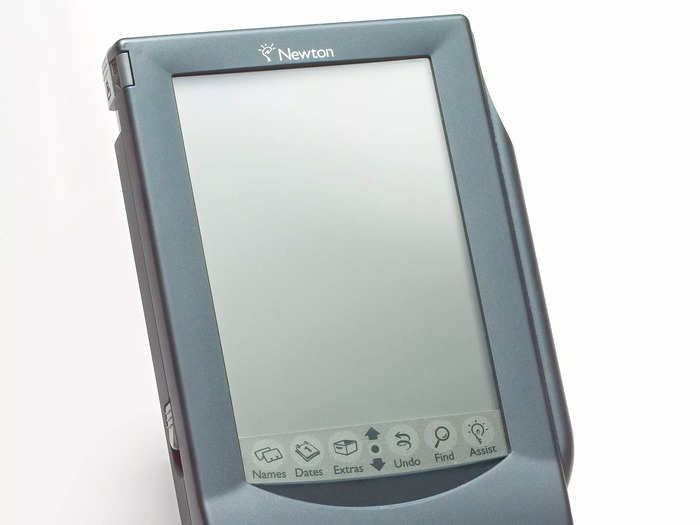
The MessagePad had a brief life, but it made a big impact. The device could take notes, keep track of your calendar, send faxes, and store contacts. There's even a museum dedicated to it, Wired reported.
1994: The IBM Simon was the first PDA that also had telephone functionality.
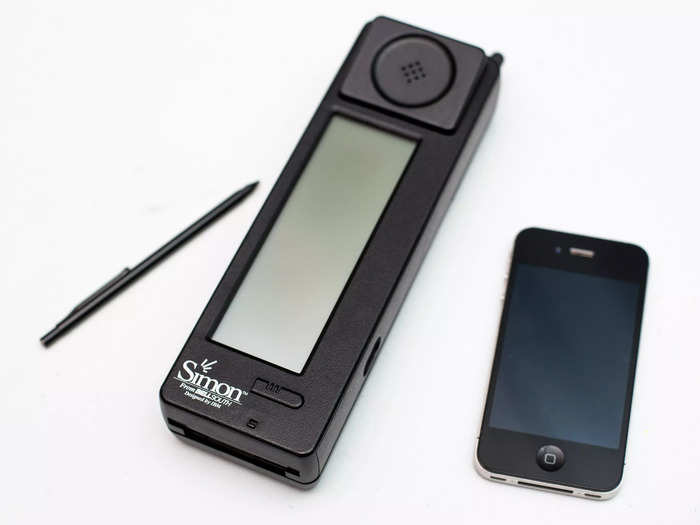
The IBM Simon was a precursor to the modern day smartphone, Time reported. The personal assistant device was the first to have telephone capabilities. It also had a touchscreen and even apps.
1995: The Virtual Boy was designed by Nintendo as a foray into the world of virtual reality.
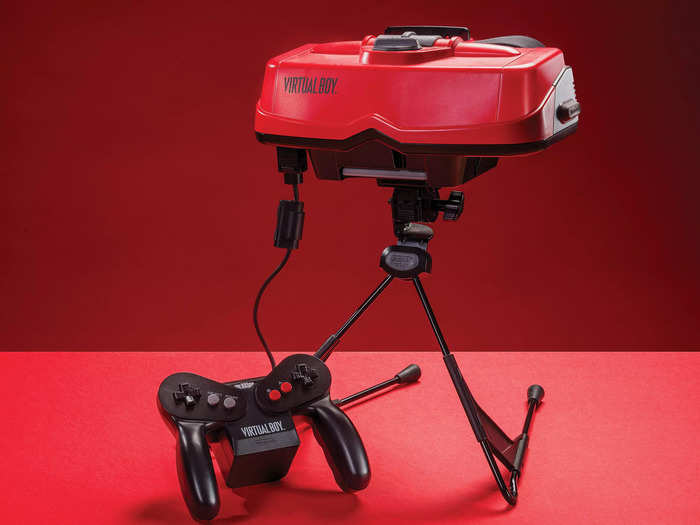
Though it didn't prove to be successful, the device developed something of a cult following among collectors, and the idea of virtual reality was revisited years later with the Oculus Rift. In a way, it was far ahead of its time.
1996: The DVD player entered the market as a challenger to both the VHS tape and LaserDisc for home media.
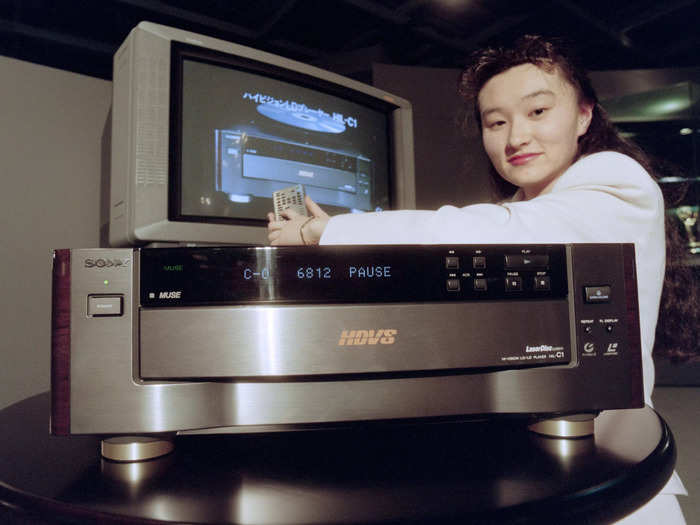
The Toshiba Science Museum reported that the first DVD player, the SD-3000, was designed in 1994 and introduced to audiences in 1996. The DVD would quickly replace the VHS for home media.
1997: Created by Bandai, the Tamagotchi was first released in the United States.
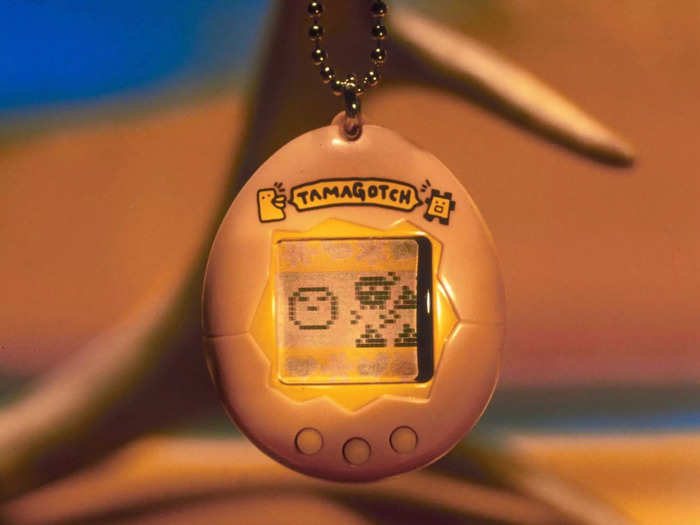
The electronic toy gave owners a virtual pet to feed and take care of, teaching plenty of kids and teens responsibility.
The toy launched a comeback in 2017, on the 20th anniversary of its US release, Smithsonian Magazine reported. There's also an app available to download for iPhones and Androids.
1998: A precursor to what was to come in the 2000s, the first MP3 music player was released.
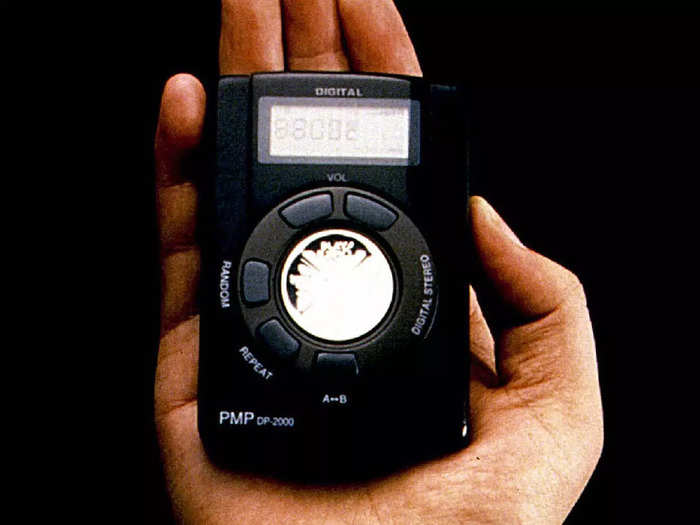
The first MP3 music player, the Diamond Rio PMP 300, was released in 1998. Rather than CDs or cassette tapes, the device used MP3 files downloaded from the web.
The Recording Industry Association of America attempted to sue Diamond over the device and lost, paving the way for future MP3 devices, iPods, and music streaming, Vice reported.
1999: TiVo, developed by Mike Ramsay and Jim Barton, launched.
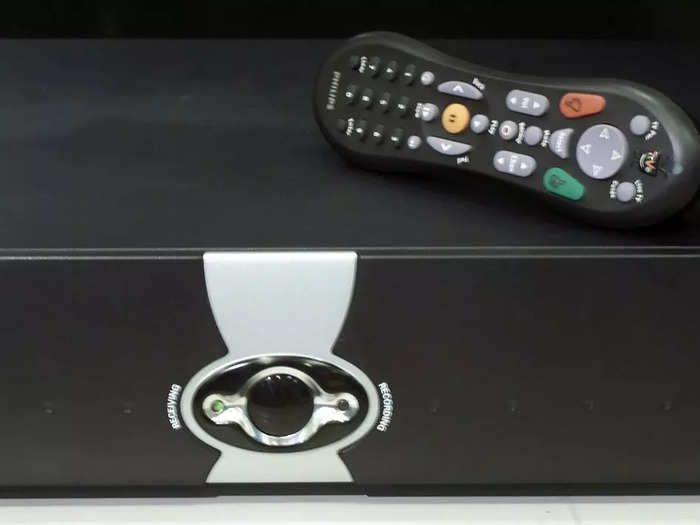
TiVo was a digital video recorder, designed to record TV shows and movies so they could be watched at a later date, something that had only been done using a VHS tape.
2000: The first camera phones hit the market, and thus the selfie was born.
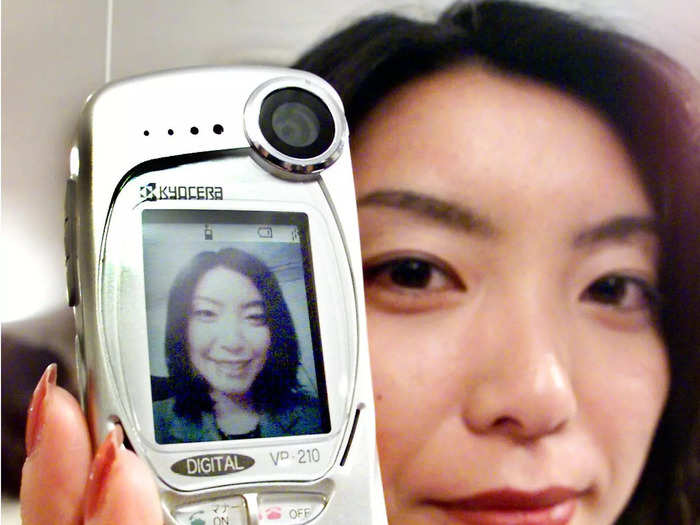
Digital Trends reported that the first camera phone, the SCH-V200, was developed by Samsung in South Korea and debuted in June 2000 — though you still needed a computer to actually access the photos.
However, Digital Trends also reported that there's also an argument that the first "real" camera phone was actually produced by Sharp in Japan, the J-SH04, in November 2000 because it allowed users to send their photos electronically — a function the SCH-V200 didn't have.
2001: The first iPod was released by Apple.
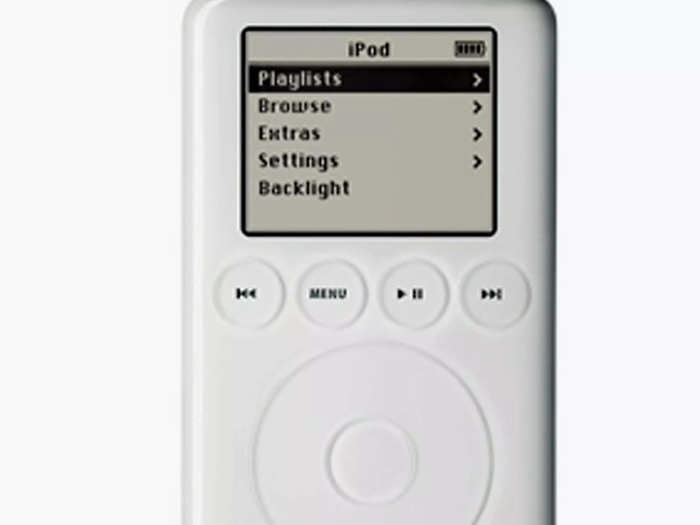
Unlike the touchscreens and mountains of storage that followed, the first iPod model had a click wheel and between five and 10 gigabytes of storage, CNET reported.
2002: Launched by iRobot, the Roomba made its debut.
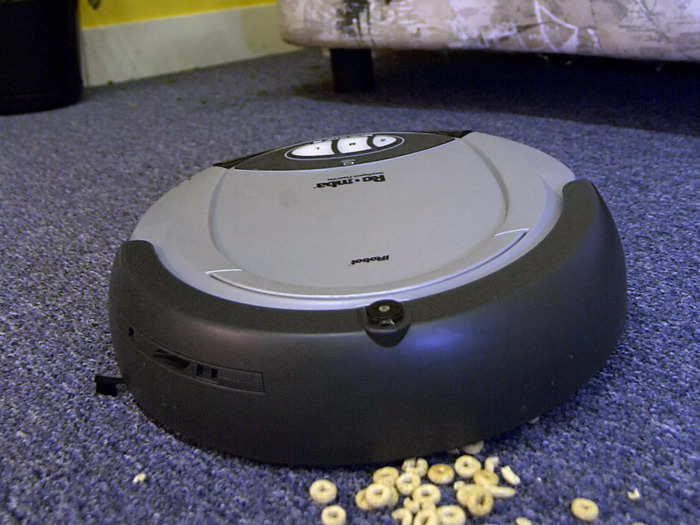
The robotic vacuum cleaner is known for its autonomous household cleaning. Say goodbye to long wires and loud vacuum noises.
2003: Launched by Tiger Electronics, VideoNow was a portable video player targeted at children and teens.
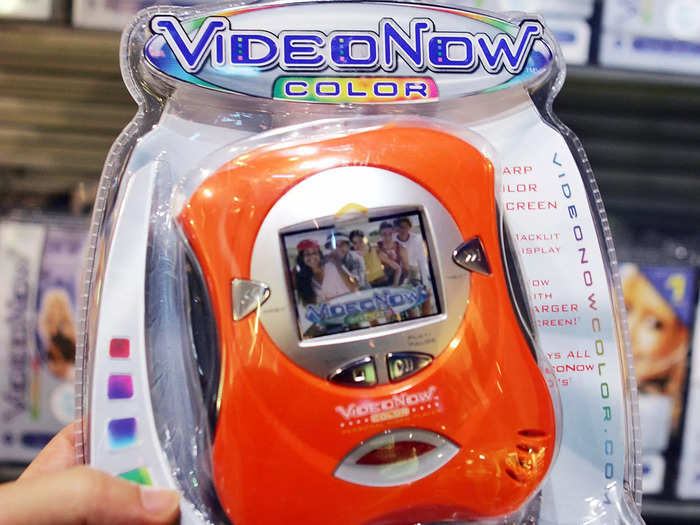
The device proved to be a popular fad. Movies and TV shows were sold on VideoNow discs that played on the device.
2004: Nintendo released its highly successful Nintendo DS handheld system.

The gaming system combined touch-screen technology with a stylus and dual screens. It was one of the first gaming systems to use WiFi and it had a built-in microphone, as well.
2005: The Xbox 360, designed by Microsoft, was released.
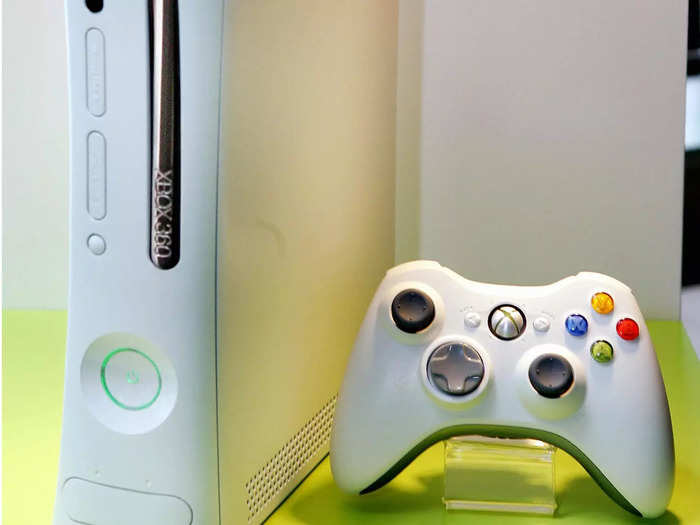
Popular video games for the system included the franchises "Halo" and "Gears of War." The Xbox 360 was replaced in 2013 by the Xbox One.
2006: Family game nights have looked very different since the introduction of the Wii.
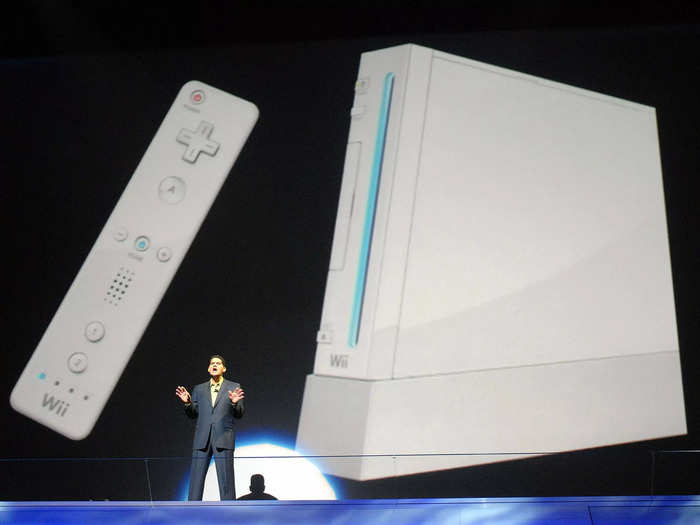
The Wii by Nintendo was one of the first motion gaming consoles, prompting families to gather around their TVs for game rights rather than their kitchen tables. The game Wii Sports was bundled with the original consoles and is Nintendo's best selling game of all time, Screen Rant reported, with 82.9 million units sold as of 2021.
With virtual versions of sports like bowling, tennis, and even boxing, there was something for people of all age groups to enjoy. Other popular Wii games included Mario Kart Wii, Wii Sports Resort, and Wii Fit.
2007: Steve Jobs unveiled the first iPhone, forever changing the world of smartphones.
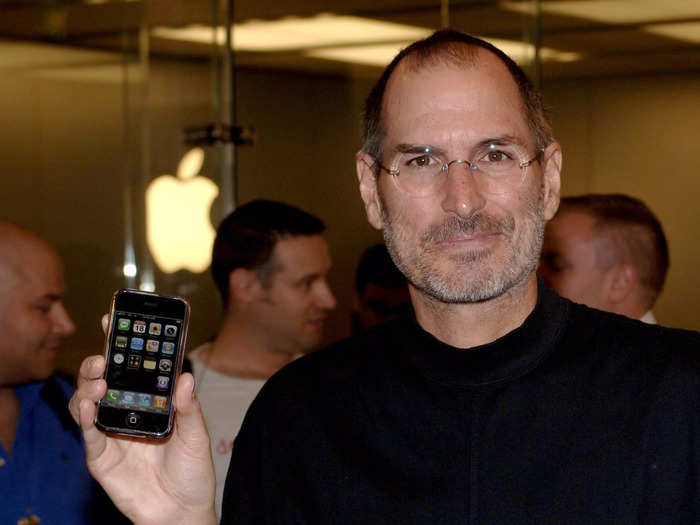
The first iPhone seems almost prehistoric compared to today's standards. There was no app store, no texting photos, no Siri, no maps, and it was significantly smaller than iPhones today.
And yet, it fundamentally changed the way users interact with technology on a daily basis by consolidating different devices into one pocket-sized invention with a noticeably sleek design and user-friendly interface that Apple users still admire today.
2008: ABC News reported that netbooks were more popular than iPhones.
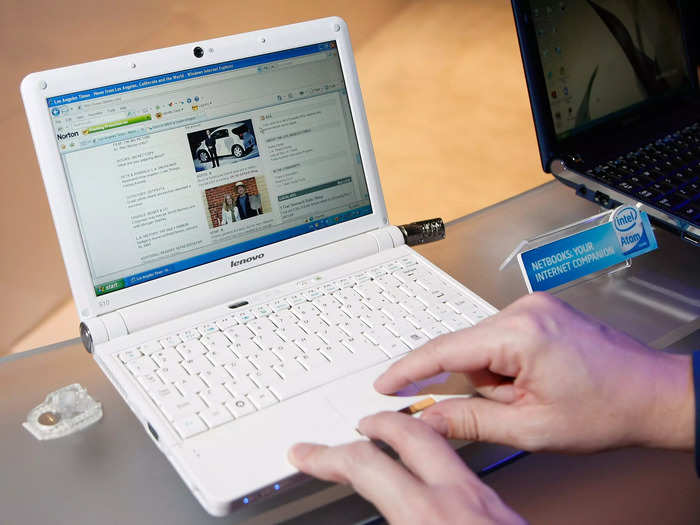
Apple and the iPhone clearly got the last laugh, but in 2008, netbooks were incredibly popular. Described by ABC News as "an ultraportable notebook," netbooks were essentially inexpensive mini laptops predating the tablets and better smartphones to come.
ABC reported that in quarter three of 2008, 5.6 million netbooks were sold in comparison to 4.7 million iPhones.
2009: The Kindle 2nd generation was released.
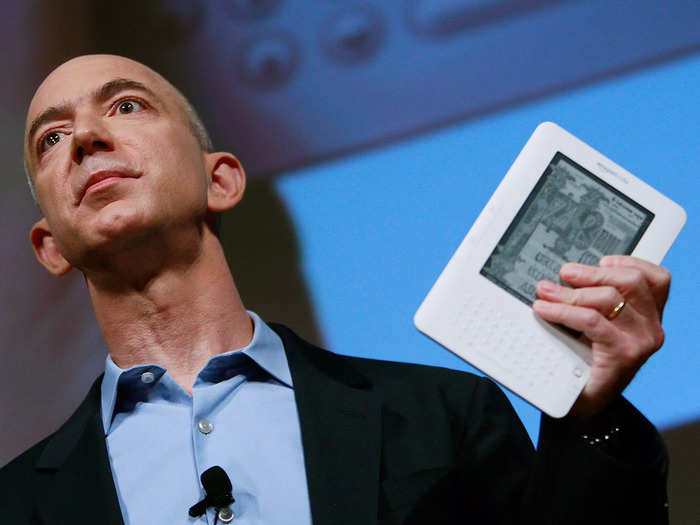
The Amazon Kindle 2nd generation was the most popular e-book reader of 2009, CNET reported. With improvements to its storage capacity and design, the Kindle 2 helped continue to usher in a shift toward digital reading that's still popular today.
2010: Three years after the first iPhone, Apple released the first generation of the iPad.
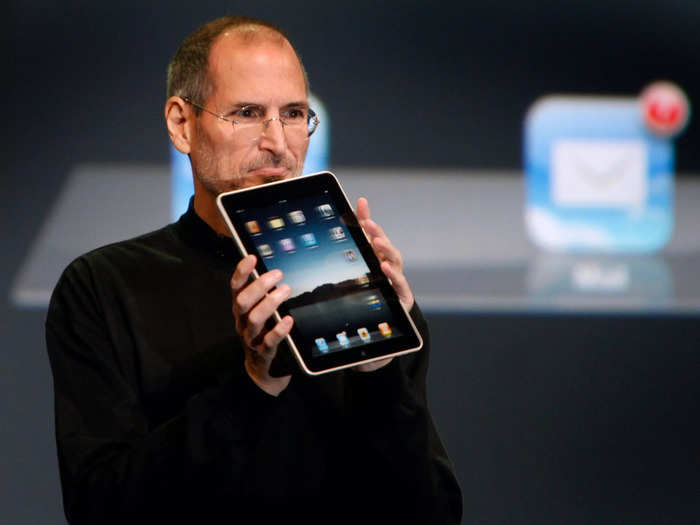
Completing the trifecta of Apple devices: phone, laptop, and tablet, the iPad made its worldwide debut in 2010. In a press release from January of that year, then-CEO of Apple Steve Jobs said, "iPad creates and defines an entirely new category of devices that will connect users with their apps and content in a much more intimate, intuitive, and fun way than ever before."
Popular Right Now
Popular Keywords
- India’s wearables market decline
- Vivo V40 Pro vs OnePlus 12R
- Nothing Phone (2a) Plus vs OnePlus Nord 4
- Upcoming smartphones launching in August
- Nothing Phone (2a) review
- Current Location in Google
- Hide Whatsapp Messages
- Phone is hacked or not
- Whatsapp Deleted Messages
- Download photos from Whatsapp
- Instagram Messages
- How to lock facebook profile
- Android 14
- Unfollowed on Instagram
Advertisement